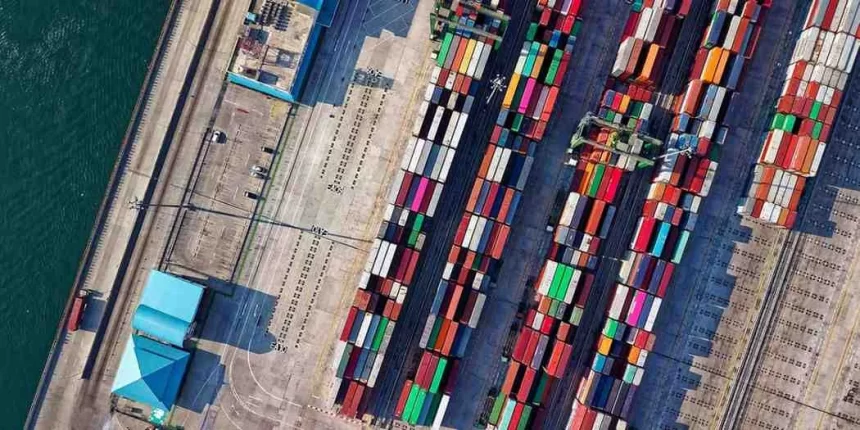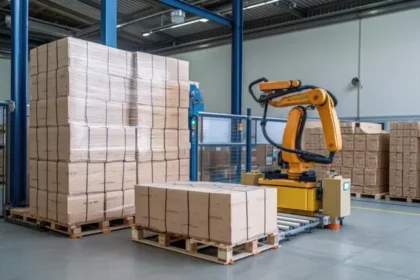The supply chain transformation is the addition and introduction of technology to increase the supply chain’s efficiency. The term can refer to any revision of supply chain management (SCM) policies and procedures. Whereas it is generally related primarily to the digitization of supply chains.
Supply chain transformations comprise of two main parts: Digital Investment and Management of Transformation. The necessary technologies and equipment assets to be implemented in the transition are digital investments. Management of transformation refers to the use of digital assets and their application. Successful transformation management processes should include:
- A strategic strategy with specific long-term priorities that are quantifiable. As technology changes very quickly, this strategy should allow for flexibility.
- Structured governance, preferably with centralized digital implementation monitoring.
- A customer-obsessed, data-informed, and creative society.
A McKinsey study from 2017 found that average levels of digitization of the supply chain were relatively low compared to other business sectors. On average, vigorous efforts to change the digital supply chain were associated with the largest boost in earnings’ annual growth.
The Goal of Supply Chain Transformation
The ultimate aim is to optimize the supply chain flow to better suit the needs of the company. This also seems to involve introducing innovations to digitize supply chain processes in the sense of today’s market and technology environment. Companies such as Amazon, which use technology like autonomous vehicles, are seen as pioneers in the supply chain transformation. By redefining how it gets accomplishment, they create the benchmark for what can be achieved. As a result, to remain competitive with organizations effectively changing their supply chains, other businesses must respond to similar steps themselves.
Capabilities for the Supply Chain to Consider
The most prominent technologies implemented in supply chain transformations are:
- Virtual Reality (VR) – As compared to wider one-size adoption, for particular use cases. It can assist with functions such as interactive visualization capabilities, data capture, and high-fidelity simulation environments (like high-risk employee training).
- Augmented Reality (AR) – Smart glasses with AR features can help direct employees across warehouses to efficiently select products that reduce human error. On-site staff may access data such as schematics, workflows, instructions, or maps to help decision-making.
- Blockchain – It creates transparency in transactions to build trust between companies, provides permission-based access to security. It is in use for smart contracts, provides real-time monitoring of deliveries and shipments, better assets, and order management.
- Artificial Intelligence (AI) – AI can improve warehouse performance, assist with systematic inventory management, and help analyze workplace safety data to identify risks. It can provide better customer support through chatbots at lower costs, accelerate warehouse operations, and minimize operating costs through automation.
- 3D printing– It provides better inventory control, less obsolete products, faster production times. Digital files are used for on-demand printing, higher levels of responsiveness, fewer suppliers, and a local supply. This results in less transport and simpler logistics.
- Autonomous Mobile Robots (AMRs) – It can support warehouse employees with optimization, fleet management, and picking.
- Drones- It can quickly transfer small products inside distribution centers, removing the need for equipment such as forklifts and quick deliveries.
- Autonomous Vehicles- By eliminating human driving errors, self-driving vehicles in the supply chain will minimize warehouse networks’ density and lower transportation costs.
- IoT devices- Smart sensors, cloud systems, and analytics can produce better inventory management, monitor product conditions during shipment, and manage warehouses. It can synchronize routes by arrival times, conditions for log/track delivery vehicles, simplify supplier onboarding processes, and control project schedules.
Advantages and Challenges of a Supply Chain Transformation
Specific advantages and disadvantages can come from undertaking a supply chain transformation.
Benefits of a supply chain transformation consist of:
- Improved lead times and capacity to meet customer requirements.
- Usually, rapid, observable outcomes occur.
- Better capacity to fulfill current and long-term priorities.
- Greater control over roles, capabilities, and procedures in the supply chain.
- More sales, inventory, and general supply chain visibility.
- Higher quality of service
- The supply chain is more organized and matched with overall organizational priorities.
- Data-driven processes can reduce damage, reduce delays, improve demand planning, and enhance inventory management.
Challenges and disadvantages of transforming a supply chain may include:
- Potential opposition within the organization.
- Steep curves of learning.
- In teamwork, siloed decision-making can interfere.
- Potentially high costs for devices with customizable technology.










